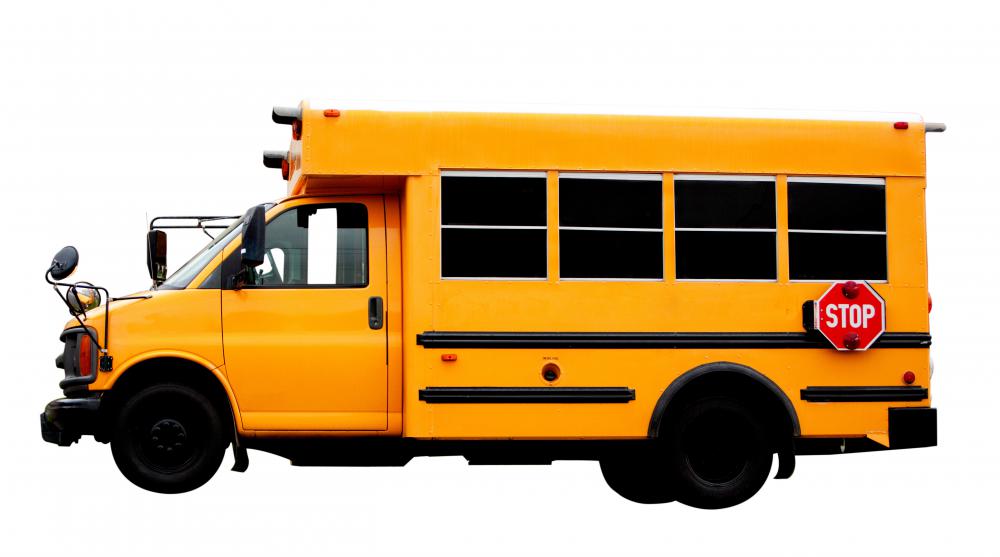At WiseGEEK, we're committed to delivering accurate, trustworthy information. Our expert-authored content is rigorously fact-checked and sourced from credible authorities. Discover how we uphold the highest standards in providing you with reliable knowledge.
How do I get School Bus Driver Training?
There are four requirements to get school bus driver training: meet the application criteria, select the school, complete the coursework, and pass the examination. Training is widely available from a broad range of driving schools. A school bus driver is licensed to operate both short and long school buses, which are used specifically for transporting children and teens.
In order to apply for driver training, you must have a driver's license with less than six demerit points, no suspensions, and no driving convictions. In the US, most states have age requirements to ensure that all school bus drivers are between 18 and 65 years of age. This requirement is based on insurability and liability and is not considered discriminatory.

The school bus driver training programs typically take eight to 12 weeks to complete. The course provides the skills necessary to become a school bus driver. The training program is divided into two components: theory and practical. The first part is classroom-based and covers driving laws, penalties for breaking the law, insurance requirements, emergency response, and more.

The practical component focuses on safe turning, stopping, collision avoidance techniques, student safety, and driving in poor weather conditions. Additional skills include how to maneuver a large vehicle, manual transmission, using gear shifts, and general maintenance. Most schools assign a driving instructor to the student. The student driver takes the wheel, and the instructor sits in the passenger seat. These specially equipped vehicles have an additional brake available to the passenger in case of emergency.

When selecting a school for training, it is important to review two items: reputation and license status. A school with an excellent reputation has dedicated significant money, time, and resources to the program over a period of years. Check the license status of the school, to ensure that it is current.
The cost for school bus driver training programs includes the fee to rent the school bus for the licensing examination. Many training programs can be completed part time, allowing students the flexibility to work and study simultaneously. The vast majority of bus companies pay for the training and licensing.

The driving examination for a school bus license is a combination of written and driving skills. The written part of the course includes recognizing signs, answering questions about driving laws, calculating the maximum load for a bus, and other related questions. The driving component includes turning, reversing, emergency exiting, steering, and breaking. This part of the exam is conducted by the government agency responsible for driver's licensing and is conducted in a parking lot and then on the road.
AS FEATURED ON:
AS FEATURED ON:














Discussion Comments
@Iluviaporos - I don't know if a school bus driver ever actually forgets his or her cargo, though, because they are going to be constantly reminding them of what's going on. Kids are really noisy on the bus and they can be extremely disrespectful as well, and the driver doesn't really have any way to stop that kind of behavior.
There was that case recently where the kids said horrible things to their bus driver until she started to cry and there was just nothing she could do to retaliate. I personally wouldn't want school bus work, because at least on a city bus you can throw the passenger off if they start getting out of control.
@irontoenail - Honestly, I'd rather have someone behind the wheel who was overly concerned with school bus safety, rather than someone who was taking it for granted. I like to think that no one does take it for granted, but it's difficult to stay on point for every moment of every day in a job when you've been doing it for years.
I just don't know if I could handle a school bus job. I'd always feel so worried about somehow making a mistake and injuring or killing the kids on board. Children are such a precious thing. I always feel a bit nervous driving with even a couple in the back, let alone driving a bus loaded full of them.
I know that's probably just me letting my imagination go into overdrive, but I feel like even just being that nervous about it would probably make me a bad candidate for the job.
Post your comments